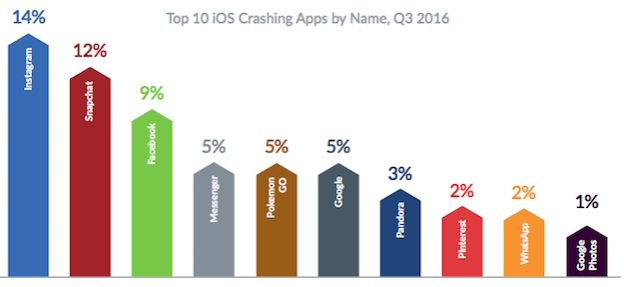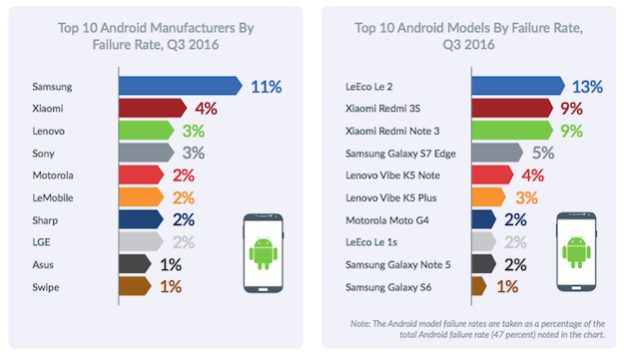As we all generally assume that the Apple’s iPhone is far more stable of a device than your average Android smartphone, right. But, hold on, a new data was organized by a security company who suggests oppositely.
New Study Claims iPhones Fail Far More Often Than Android Devices
One of the advantages traditionally been associated with iOS is that the system was more stable because it was designed and adapted for specific hardware, while Android applied to any phone, making tailor an application to work on many phones and theoretically it is a very complex task.
Did you know 62% of iOS devices experienced a failure of some sort over the last three months compared to just 47% of Android devices. Hence, a study carried out by a security company known as “Blancco Technology” who claims that the failure rate of iOS is 62%, compared to 47% of Android as we told. In that failure rate, it is taken into account virtually everything is out of the ordinary, such as application crashes, failures to make connections to a server, overheating while using an application, unexpected reboots, and so on.
These faults affect most parts of the operating system than others. For iOS, there are third-party applications that generate this instability, while in the case of Android, paradoxically, there are system applications that most problems lead as Google Play Services, Phone or Contacts.

Among the applications with more crashes on iOS are Instagram, with 14%, followed by the Snapchat with 12%. Facebook is third with 9%, and Messenger is in fourth with 5%, tied with Pokémon Go and Google applications for iOS. The most interesting thing is that the device like the iPhone 6 crash the most taking the top spot with a failure rate of 13%, followed by the iPhone 5s and 6s which tied for second with a failure rate of 9%.
While the iPhone 6 Plus and 6s Plus have a rate of 5% and 4%, respectively. For information on the iPhone 7 we will have to wait until February next year, which will begin to account for the last quarter of 2016.
Crashes in iOS may have been also higher because the period in which this study (third quarter 2016) was conducted, includes the month of September, at that time the tech giant Apple released iOS 10, which leads to inconsistencies and errors in applications, as it happens in any newly launched operating system.

As for Android, the more the software is customized, automatically the device will start to hanging and lagging. Across the handset manufacturers, like Samsung devices experienced the highest failure rate of 11% followed not too closely behind by the Chinese smartphone manufacturer like Xiaomi, Lenovo, and Sony which had failure rates of 4%, 3% and 3%, respectively.